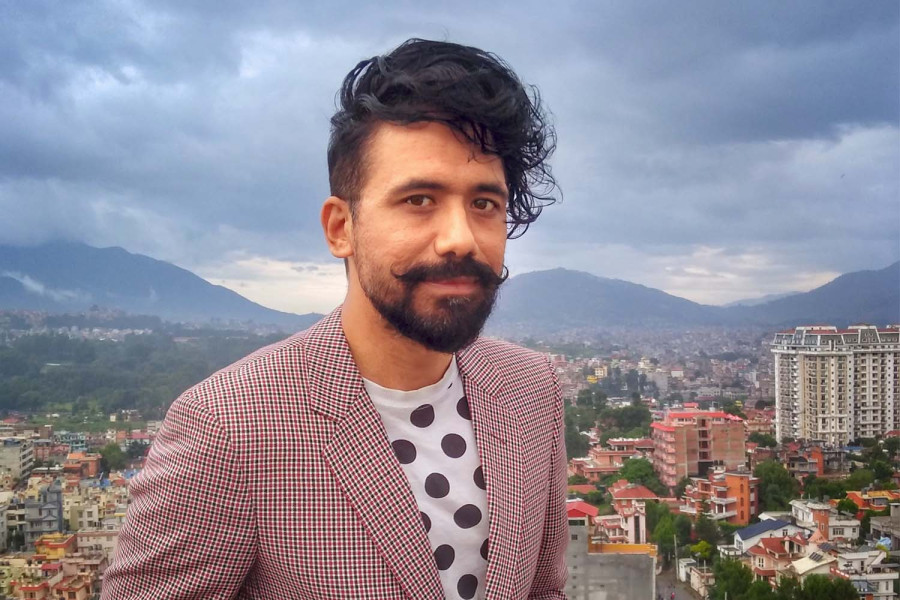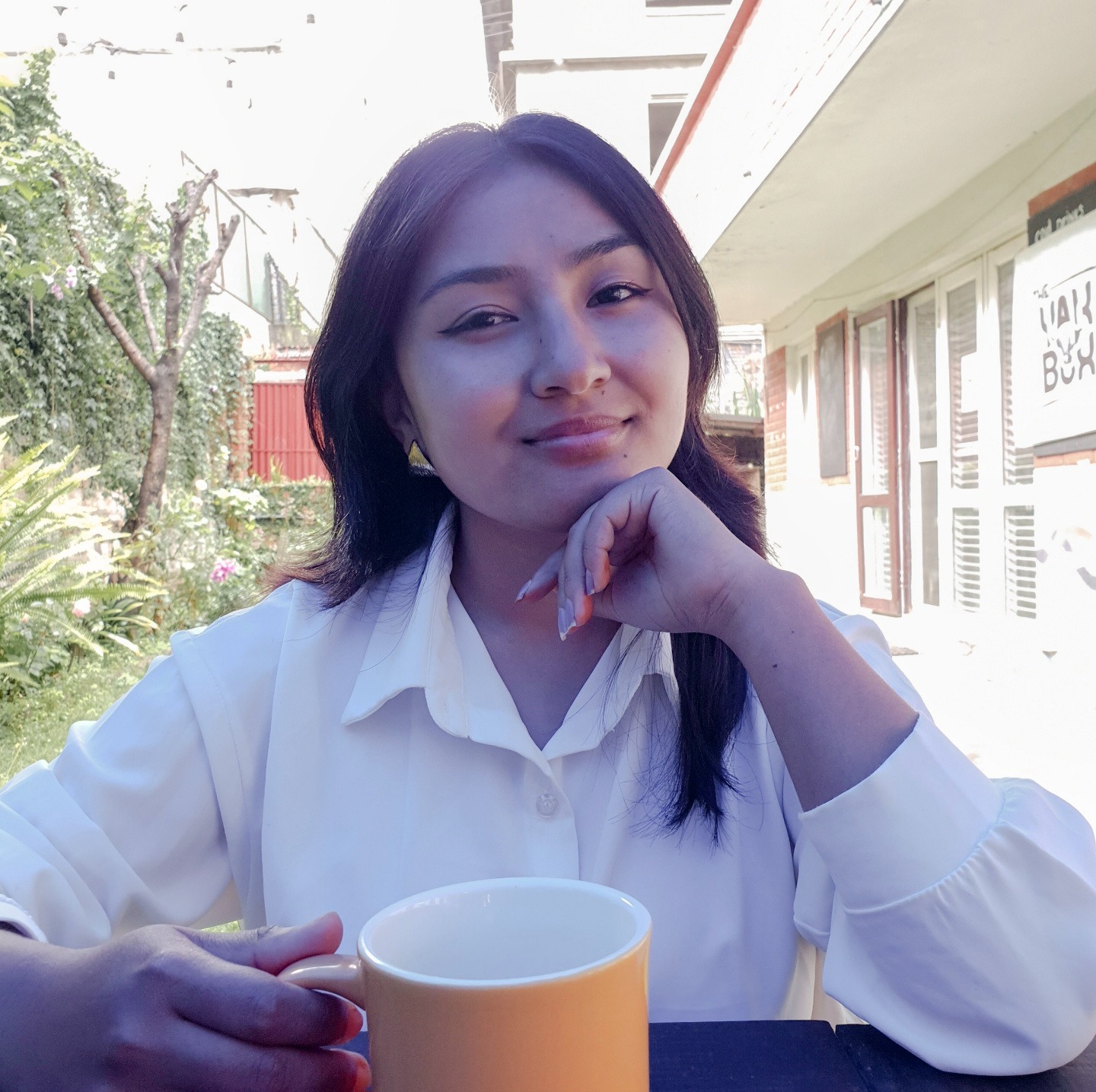Books
At the intersection of literature and photography
Diwas Raja KC, head of Research & Archives at Nepal Picture Library, discusses how visual archives help preserve the stories of marginalised communities.
Timila Maharjan
Diwas Raja KC is a writer, researcher, and curator who currently heads Research and archives at Nepal Picture Library. He is also the editor and curator of the photobook Dalit: A Quest for Dignity (2018) and the co-curator of the award-winning ‘The Public Life of Women: A Feminist Memory Project’. In this conversation with the Post’s Timila Maharjan, Raja KC explores the significance of literature and photography in documenting Nepal’s feminist and Dalit histories.
How did you discover your love for books?
I developed a love for reading at a young age, sparked by the idea of who I wanted to become. Being in a school with a strong reading culture pushed me to read regularly and discuss books with friends.
How do your reading habits influence your work?
Reading shapes my work. It sharpens my critical thinking, exposes me to diverse perspectives, and deepens my understanding of context—key aspects of my work.
Do you prefer fiction or non-fiction?
I now focus mostly on non-fiction, especially history, as it helps me grapple with real-world ideas and events. This shift deeply influences my writing and curation style.
Are there any authors or scholars who inspire you?
Karl Marx is always on my mind. Many think he's challenging to read but witty and engaging. Once you’ve read him, it’s hard to see the world the same way, and his ideas stay with you, influencing how you view everything.
How do you balance reading for research and pleasure?
I don't measure books by pleasure alone. Some challenging texts bring a more profound sense of fulfilment. Lately, I've been reading about the environment and climate change, which can be tough but insightful. Books like ‘Braiding Sweetgrass’ by Robin Wall Kimmerer are powerful beyond good writing.
What inspired you to explore the Dalit community's history in ‘Dalit: A Quest for Dignity’?
The book aimed to document the Dalit struggle in Nepal and engage with archival photographs. Both goals challenged how history is told, and the sources used. Nepal's historical writing often overlooks the political needs of marginalised groups, and this book seeks to address that gap.
What was the most challenging part of creating the book?
The biggest challenge was the erasure of caste from public view. Many believe caste is a thing of the past, but it remains a deeply entrenched structure that continues to evolve. Highlighting this persistence was crucial.
How do visual archives enhance understanding of marginalised communities in literature?
Photographs are often more common in personal collections than written records. While we might assume archives are lacking for marginalised communities, visual archives challenge that notion. Photographs document presence and evoke emotional and metaphorical responses, making them powerful tools for interpreting marginalised histories. This helps create counter-narratives that disrupt traditional historical perspectives, showing marginalised groups as active historical participants.
How did you choose which stories and images to include in ‘The Public Life of Women’, and what do you hope readers take away?
The book emphasises the power of collective action in Nepali feminist history, highlighting how women discovered solidarity rather than focusing on individual success. This collective experience guided the selection of stories and images. While the book features well-known figures, it highlights the many overlooked women whose histories aren't well-documented. It also acknowledges the complexities within feminist movements, such as divisions based on class, caste, ethnicity, and sexuality.
Can you describe your research process and the types of archival material you seek?
At Nepal Picture Library, we assess archival materials based on their evidentiary qualities—what they show, their interpretive potential, and their material aspects. Equally important is understanding what the original holders of these materials value in them. Photographs, for instance, have social lives; people interact with them. Paying attention to how people engage with these materials is key to shaping the narratives in our books. This approach helps us create a more meaningful and socially informed account of history.
You’ve worked with many artists and visual anthropologists. How has that collaborative experience influenced your writing and curation process for your books?
It's essential to be in conversation with others in your community. There’s this persistent myth that writers and artists are solitary figures, creating through individual genius and originality. But that’s a completely false picture of what it means to create and write. In the book, ‘Pollution Is Colonialism’, Max Liboiron discusses Indigenous research ethics and shows how researching, reading, writing, and creating are fundamentally relational activities. I firmly believe in this. Creativity—and all intellectual endeavours—are inherently collaborative efforts.
What role does literature play in preserving public memory, especially in the context of marginalised or obscured histories in Nepal?
This question brings to mind a compelling book called ‘Textures of Time’. Early Western writers often portrayed non-Western societies as lacking history or indifferent to the past. This book dismantles that notion by reading between the lines and uncovering the historical ‘textures’ embedded in South Asian literary writings.
However, we must go beyond literature to truly understand the value of stories for collective memory. Before alphabets and bureaucratic and textual systems of archiving, stories were the original memory keepers. There is no memory without stories, poetry, songs, or oral traditions. This ties into why I find photography so important as well. Regarding marginalised communities, we need to think beyond literary forms.
Diwas Raja KC’s book recommendations
The Dawn of Everything
Authors: David Graeber and David Wengrow
Publisher: Farrar, Straus and Giroux
Year: 2021
The book challenges assumptions about human history. Its scope and insights offer crucial connections between our past and present.
Less Is More
Author: Jason Hickel
Publisher: William Heinemann
Year: 2020
We must embrace degrowth to address the climate crisis. Hickel’s writing challenges our reckless obsession with endless growth.
Caliban and the Witch
Author: Silvia Federici
Publisher: Autonomedia
Year: 2004
Federici discusses women and capitalism in Europe. I wish it were a more widely read introduction to feminism.
The Palestine Laboratory
Author: Antony Loewenstein
Publisher: Verso Books
Year: 2023
This book documents how the violence against Palestinians has become a testing ground for policing and surveillance techniques that now threaten democracies.
The Darker Nations
Author: Vijay Prasad
Publisher: The New Press
Year: 2007
This inspiring account highlights poorer nations' aspirations for progress and freedom through international solidarity.




 10.12°C Kathmandu
10.12°C Kathmandu














